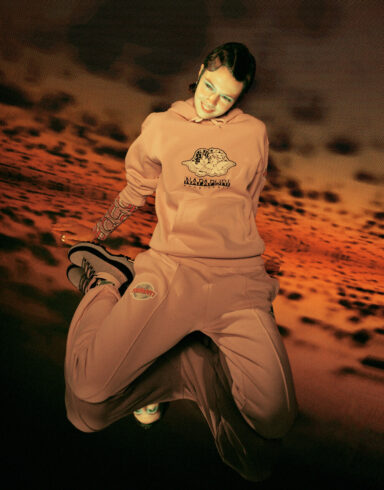POP ART, SPIRITUALITY, COSMOPOLITISM, SIXTH SENSE, NAIVETY, GENIALITY, FREEDOM – A VISIONARY TRIP THROUGH THE BEYOND-CREATIVE MIND OF THE MOST FORERUNNER FASHIONISTA AND HIS BEATNIK COLLABORATORS
In conversation with Franca Soncini, his better half
by Diletta Accorroni
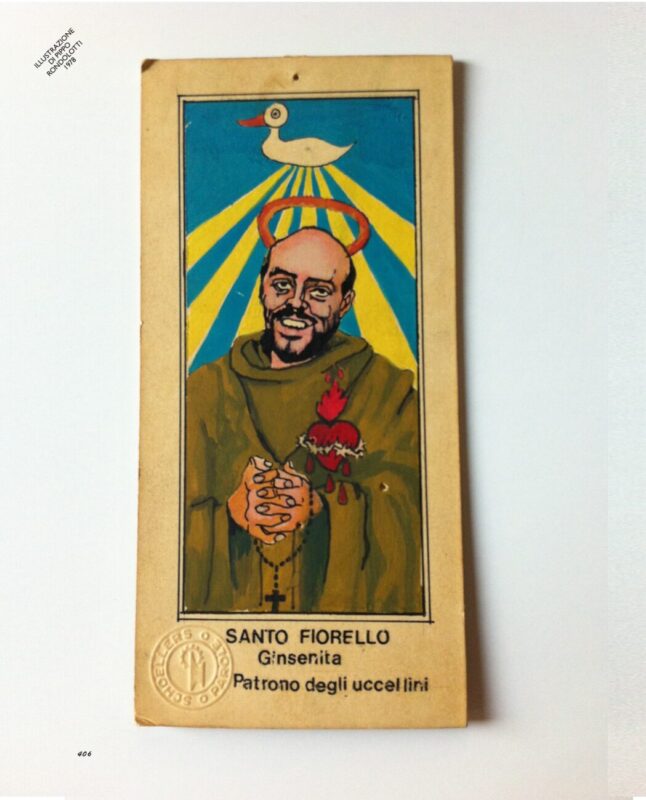

Considering that you’ve had the privilege of knowing Elio Fiorucci personally, and that you’ve been one of the most popular members of his Factory, I was wondering what impact he had on you, to re-live that era once again, through the book. How much of Elio’s spirit lies in those pages?
Franca Soncini: It’s curious that you use the term Factory. Actually, if we think about it, it could have been considered like it, with no doubts.
Everything and everyone used to go through Elio’s Factory, in the first place. There, some artists arrived with ideas that many times worked out perfectly, while some others stayed with us for a while, in order to develop new projects. Some others time, it might happen that one of us “insiders” had the contact of somebody who were doing cool stuff, so we sorted out ways to include her\him on the team.
Elio was always willing to listen and welcome the most diverse people, and literally everything could happen.
We laughed, celebrated and suffered. Thanks to Elio we had the unique opportunity to express ourselves, to learn and to know things. We basically invented a job.
When Franco Marabelli, a dear friend I met at Fiorucci, told me about the project he wanted to dedicate to Elio, I had no hesitation to give him all myself, in order to support his great idea.
Franco worked with Elio much longer than me and he knew every single person who passed by Fiorucci. On the occasion of this book, he contacted all of us, one by one, unreservedly. His tenacity and never-ending passion enchanted me.
Coming to myself, I consider Elio the person to whom I professionally owe everything. He was the one I loved, but also the one with whom I argued the most. Of course, it was beautiful to work with him, but sometimes it was terrible, too!
In these 3 years of “book incubation”- precious memories, which were buried, has come again to my mind. I had the chance to meet people I hadn’t seen for ages and it felt like we never left each other’s.
The memory of Elio pervaded me with both joy and great sadness, because he is gone and we miss him so much now. We have all been very lucky to cross his path, he really changed the life of a bunch of us.

Among many other things, Elio Fiorucci was an extraordinary visionary, able to understand that, to quote Bob Dylan, ‘The times they are a-changing’. On May 31, he opened his shop in San Babila, and only a few months later Milan itself was affected by the protest of 1968. So, do you think that Mr. Fiorucci might be defined as a sort of forerunner, able to predict changes- I mean, politics aside?
I do believe Elio was the greatest innovator fashion has ever had. I often tell myself that many designers should honor him (and Rei Kawakubo, too) with a statue, or at least they should have on their bedside table a prayer card, dedicated to him. He paved the way for everything that came after.
Let’s not forget that when Elio started, there were only big productions and seamstresses. Pret-a-porter born in that period, but it was for a few, only.
Fiorucci has dressed the whole world and different generations.
Regarding this specific period, I remember that right before the protests of 1968, there were two phenomena: the “Hippies” and ” Swinging London”, which deeply fascinated Elio. He started then travelling often to London, and he was the first one importing Biba, Mister Freedom and a few of others to Italy.
I think he was captured by the air of freedom that you could breathe in London, and by that impudent kind of fashion that doesn’t have any diktat. It was a sort of joyful revolution, that broke with the past all in a sudden. It wasn’t just about clothes; it was way more than that.
Trying to go deeper in t this theme. In those glorious years we had Biba in London, the Warhol Factory in New York and Fiorucci in Milan…Any links or peculiarity among these extraordinary experiences?
Elio was always travelling. Both alone and with friends. Very often he was doing it with the other designers and with his closest collaborators, too like Franco Marabelli, for example. He often asked his friends who were travelling abroad, to purchase objects or clothes that they considered interesting.
The stores in Milan and New York were the first concept stores ever seen and it took decades to spot more of them around.
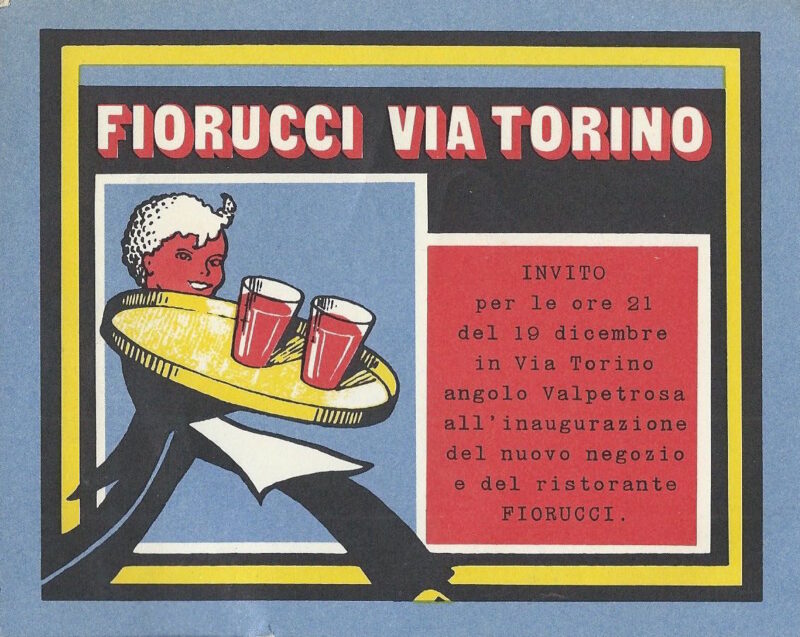
Can we say that Globalization– one of the most abused concepts nowadays – was somehow anticipated by Elio’s Cosmopolitanism ante litteram? I believe that the fact of being a citizen of the world is one of the most recognizable features of his brand. This began from the kind of shop he created, which has been the forerunner of modern concept stores, as you also underlined. Is that an exaggerated statement, or do you agree with me?
Well, it was like living at a crossroads. People were coming and going, while ideas fluctuated without any pauses or distinctions. Almost every day, new projects were put in place.
Even if we had much fun, we worked as crazy. I remember when the store in Via Torino was born. I invented an internal circuit of video-art, an idea that Elio appreciated a lot, but which made me going crazy because at that time finding the materials we needed for it, wasn’t easy at all. Then, it was the time of the Travel Agency. I was able to get a bus from Rimoldi and I asked some talented friends to paint it. In my head that was the Fiorucci Magic Bus, that should have left from Milan to get to India. We knew the date of departure, but of course we had no clue of the arrival one. Sadly, the Travel Agency does not take off (because of the person in charge of it) and we donate the bus to some artists who brought it to Liguria and lived there for a long time.
We had plenty of ideas! Elio used to come up with an idea and then it was up to us to make it happen. Sometimes, he even came to us with a different project while we were in the middle of the opera with something else…You stood there like WHAT, because you didn’t finish yet, but he changed his mind already and knew that thing was no longer needed. This was sooo Elio! To suddenly fall in love with something, and with the same amount of speed, to fall out of love. However, he was always so kind and innocent (smart ass hei!) that was hard to be mad at him.
However, I once get so pissed off that I organized the first (and only, I guess) strike among the Fiorucci creative team. Elio neutralized us quickly, pretty much admitting we were right.
Another reason why Elio could be considered a fantasist it’s because of his visionary lucidity, which allowed him to break down every hierarchy and every wall between different disciplines and aesthetic experiences. To him fashion, art, design, painting, music and son on… had to successfully interact with each other, erasing the stale categories of A arts and B arts. Therefore, I can imagine your office being a real laboratory of ideas. From this point of view, what meant to you, to work with him?
Elio had no limits. This was in his DNA; it was natural to him. People (whether famous or not) could feel it, and only a few were able to say NO to him.
Coming to us, we were shameless; an obstinate and indomitable team who thought it was ok to contact the most disparate people, if we considered their work could easily merge into the spirit of our brand. Elio kept telling us “Fiorucci is the joy of life” and we have always put in place this mantra. To be honest, we have also messed up the things, a few times. However, he didn’t complain too much about it. I’m not sure if that was for the sake of keeping the peace, or just because he was busy doing other things…

Among the several artistic personalities met by Fiorucci, we have Keith Haring and J.M. Basquiat…Do you remember how these friendships began and developed?
Regarding the first, I honestly don’t know who had the idea of doing a project with him. It might have begun with Elio’s friends knowing Keith, then someone else thought about a specific project and someone in Milan (most probably, Franco) made it happen. Same thing happened with “New York Beat Movie” (also known as “Downtown 81”). Basically, Edo Bertoglio and Maripol were living in New York at that time. Edo was a great photographer, while Maripol (who became famous lately for having dressed Madonna and Grace Jones, among others) had a Fiorucci corner where she showed her jewels. They were hanging out with the downtown art scene and probably they were friends with J.M.Basquiat (SAMO). Probably, the idea of the movie, in which Edo Bertoglio was the Director and Maripol the Art Director, started there. Elio, who was a friend of Angelo Rizzoli and proposed himself as producer of the movie, along with him. The movie was finally out in 2000.
Coming to Warhol, Franco can tell about him, considering they experienced the New York adventure together, having been the Creative Director of the store.
As I said before, Elio was dazzled by Swinging London so he decided to import some of its creators, such as Biba, to sell their articles in his shop. Years later he met Barbara Hulanicki (Biba) and a long-lasting collaboration began. Elio owned what we call the sixth sense, the dowager’s staff. He was able to see ahead in time, to predict the future, somehow and he was open to meet every kind of experience and person.
Do you feel it is essential to develop and exercise some sort of non-conformist lateral thinking, in order to be able to work in such a situation?
I’d say all of us were naturally non-conformist. Sex, race and fame were never considered as a point of arrival nor departure. Where you came from, what you did before, it didn’t really matter to us.
What was really taken into consideration were the presence, the right occasions, the energy, the availability towards the others and our open-mindedness.
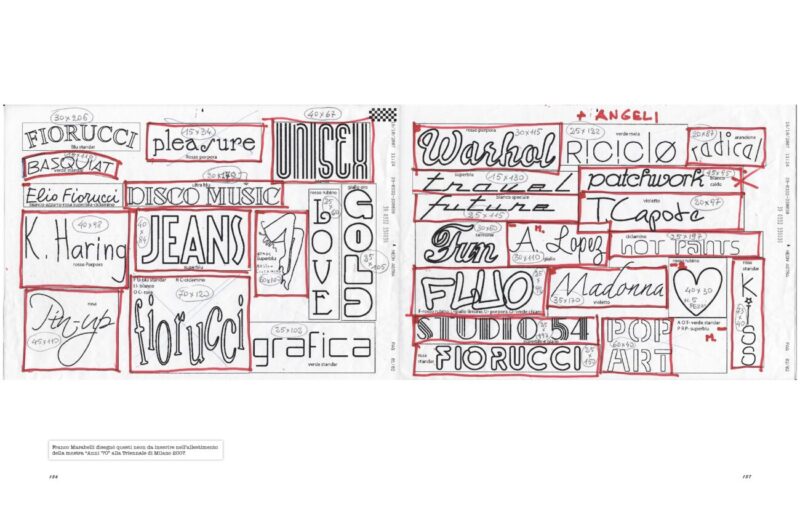
‘Caro Elio, un viaggio fantastico nel mondo di Fiorucci’ illustrated book is available at both online and offline bookstores. Italian and english edition worldwide.
Credits
Curated by Franco Marabelli
With the collaboration of Franca Soncini
Art Director PierPaolo Pitacco
Consulting Renata Molho
Publishing Rizzoli x Mondadori Electa
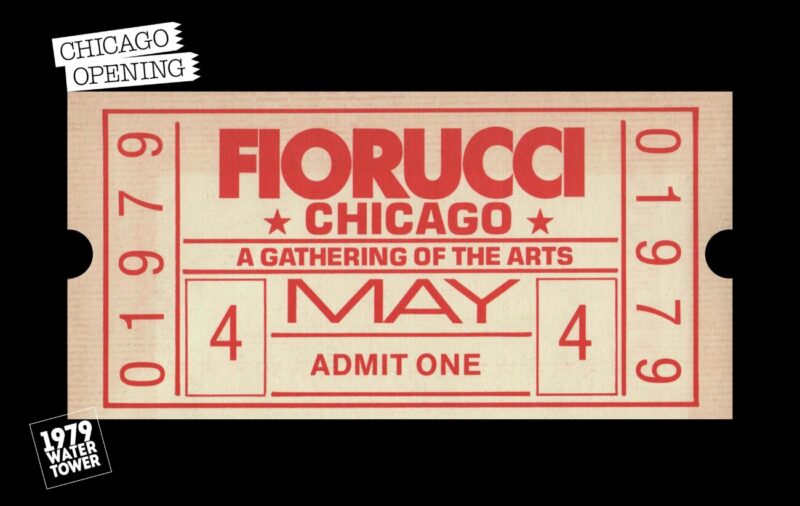
Caro Elio curated by Franco Marabelli – a record of Fiorucci’s blooming years
When I had the idea of creating a book about the history of the first 14 years of the Fiorucci’s explosion, starting was everything but easy. This happened because a huge number of images, documents, memories, ideas and characters came to my mind after more than 40 years.
I decided to begin calling friends and people who had worked in Fiorucci or collaborated for short periods with us, both in Italy and America. I lived there for almost 5 years, and slowly began to meet people and get contacts.
At the same time, I also began to collect and search for everything I could find linked to the Fiorucci’s creativity, which ranges in a million of different things.
Doing so, I began to give life to a proper archive, including all the things I personally kept for years.
I started to see these people again and to interview them. It was like a beautiful jump in the past for everybody, a past where we had lived, known and experienced a way of living and working that we couldn’t have had anywhere else in the world.
I started from there, with several appointments and it wasn’t always easy to contact people…sometimes I even waited for months, while my archive was getting bigger and bigger.
I also went to New York to meet the people who worked with me and to look for materials, especially in Antonio Lopez’s archive, which I inherited from a friend. I also found the Pr of the Studio 54 and we managed to spend some days together, talking about all those events and unique evenings we shared.
Many people who used to work in the store lately became famous, like for ex. Joey Arias; while other characters like Lopez, Warhol, Truman Capote and Klaus Nomi sadly left us.
Andy Warhol himself used to come very often to the Fiorucci store, to see the latest news and to sign his Interview Magazine, always side by side with VIPs. To me, they were like a joyful and cheerful dinner table, and Andy always signed his magazine with a big smile on and he was even making drawings on it, if you were asking him to do it.
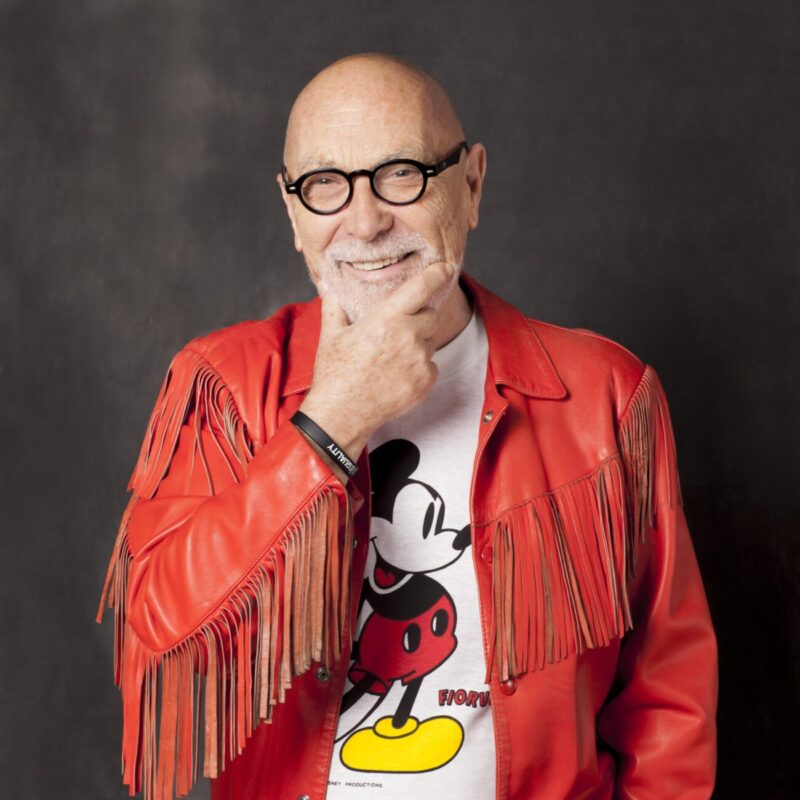
I remember the first time I had lunch at Andy’s with Elio. There, we found Liza Minnelli’s sister, Lorna Luft, and two wine entrepreneurs who had asked Andy to create personalized labels for their bottles. The house was kind of sober. In the dining room there was a console, with ready-made dishes, as we would have been in a self-service. When we sat at the table, Andy put a small recorder next to him. He recorded the whole conversation, but he hardly ever spoke.
After lunch we went straight to the Factory. In those wide spaces, a few young artists were designed the multiples of Andy’s works. Walking through the several rooms, at a certain point we saw a goat. Elio started petting her and asked Andy why he kept the goat there. Andy was like “Elio, don’t you know goats are magic animals?”. Then Elio came to me saying we should get one for our shop, too. I told him that of course we could, but it didn’t seem a good idea, considering they are omnivorous and they would tear the shop into pieces. Also, they would disseminate their “memories” everywhere, forcing us to hire people who would have followed the goat everywhere. Elio thought about this for a moment and went “Yes, better give up with this idea.”
It took me almost 4 years to collect, choose, put together in a coherent way all the images and interviews. Not sure I could have done it without the precious help of a friend like Franca Soncini, who gave me all her willingness to support me along the course of the project. Then the great Pierpaolo Pitacco joined us. He is an award-winning Art Director, who put all himself, his skills and generosity into this long and demanding job.
Little by little, the project grew and after several changes, second thoughts and integrations, has finally seen the light.
One day I remember being with Elio talking about all the things we had shared, lived and experienced in that period. About the amount of people, whether famous or not, we had the pleasure to meet… and then I realized that unfortunately we had a very little documentation and photographs about it. I was considering it a great pity, but then Elio told me “Franco, at least we lived and enjoyed that period for real! Other people could only see it through photos! We must be happy and consider ourself so lucky!”



